People of the York Robotics Laboratory (YRL)
Professor Jon Timmis is the director of the York Robotics Laboratory. Dr James Hilder is the full-time laboratory technician. Several other academics, research staff and research students, and other technical support staff from multiple departments across the University are associated with the lab.
Staff
| Name | Area of Research | Role | |
|---|---|---|---|
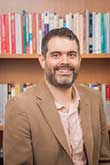 |
Dr Rob Alexander | Safety analysis and testing of autonomous robots and multi-agent systems. Simulation methods for hazard analysis. Empirical evaluation of safety engineering methods and techniques. |
Lecturer Computer Science |
| Mr Michael Angus | Robotics technician with specific focus on the ARE project. |
Technician
|
|
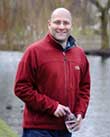 |
Prof Alistair Boxall | Emerging and future ecological and health risks posed by chemical contaminants in the natural environment. |
Professor Environment |
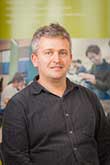 |
Dr Adrian Bors | Computer vision, computational intelligence, image processing, pattern recognition, neural networks, nonlinear digital signal processing and digital watermarking. |
Lecturer Computer Science |
| Edgar Buchanan | Research associated on the ARE project |
Research Associate Electronic Engineering |
|
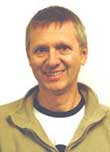 |
Mr Tim Clarke | Avionics, Bio-Inspired Computing, Cognitive Networking, Control Engineering, Evolutionary Algorithms, Fault-Tolerant Design, Flight Control, Multi-Agent Systems and Radar |
Senior Lecturer Electronic Engineering |
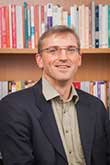 |
Prof Peter Cowling | Building computer systems to help make decisions in games and resource optimisation, using tools from Artificial Intelligence (AI) and Operational Research (OR). |
Professor Computer Science and Management |
 |
Prof Gusz Eiben | Evolutionary computing: multi-parent recombintion, evolutionary contraint handling, evolutionary art, artificial life and evolutionary robotics. Self-reproducing robotic systems. |
Visiting Professor Electronic Engineering (Vrije Universiteit, Amsterdam)
|
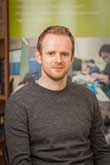 |
Dr Daniel Franks | Animal behavior, with focus on analysing animal social networks, and developing methods & models for analysing animal societies. |
Lecturer Biology and Computer Science |
 |
Dr Michael Freeman | Multi-soft-core processor based systems, with hardware OS support in FPGA devices, applied to mobile robotic systems. Background interest in hardware architectures for high speed text processing and minimal CISC processor design. |
Teaching Fellow Computer Science |
| | Dr Simon O'Keefe | Neural networks, in particular the theory and application of binary Correlation Matrix Memory neural networks. Non-standard computation, in particular bio-inspired and chem-inspired computing. |
Lecturer Computer Science |
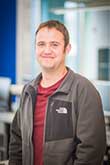 |
Dr James Hilder | Robotic hardware electronics design, currently focussed on swarm robotics and sensor design. Embedded computing. Bio-inspired algorithms, genetic algorithms and programming. Computer aided design and 2D\3D fabrication techniques. Machine vision, tracking and photography. |
Robotics Laboratory Technician Computer Science and Electronic Engineering |
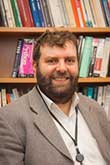 |
Dr Daniel Kudenko | Machine learning (specifically reinforcement learning), multi-agent systems, artificial intelligence for games, interacive drama, user modeling and data mining. |
Lecturer Computer Science |
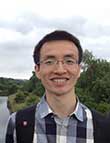 |
Dr Wei Li | Autonomous robots and computational intelligence, specifically in self-organizing robotic systems and co/evolutionary machine learning. |
Research Associate
|
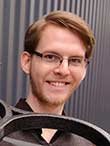 |
Dr Alan Millard |
Working on the SPANNER project - Self-repairing spiking neural networks for fault-tolerant robot control |
Research Associate Electronic Engineering |
 - Copy-110x111.jpg) |
Dr Shuhei Miyashita |
Shuhei Miyashita is a robotics researcher working on self-assembly and self-reconfigurable robots at multiple scales. His work pursuits formal understanding of synthesizing artificial compounds at the human scale, seeking a bio-inspired novel manufacturing method of robots.
|
Lecturer in Intelligent Robotics Director of the Microrobotics Group
|
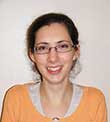 |
Becky Naylor |
Researching robotic swarm simulation on the CoCoRo Project (underwater swarm robotics). |
Research Associate Electronic Engineering |
 |
Mayank Paymar |
Collective robotic systems for environmental monitoring. |
Marie Curie Research Fellow
|
 |
Dr Nick Pears | Computer vision, pattern recognition, in particular related to 3D imaging and 3D shape analysis. Specific projects include 3D face landmarking; 3D face modelling for medical applications; 3D shape matching for web retrieval; 2D/3D face recognition, visual tracking and recognition of human activity; real-time embedded architectures for vision. |
Senior Lecturer Computer Science |
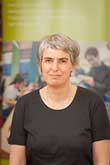 |
Dr Fiona Polack | Application and development of computer simulation to support scientific research (applications such as cancer neogenesis, cell dynamics, modelling novel computational substrates); model driven engineering (metamodelling, and domain specific languages); simulation of complex systems; emergent systems; validation arguments. |
Senior Lecturer Computer Science |
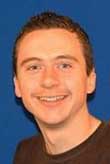 |
Dr Andrew Pomfret | Control systems, biologically-inspired fault-tolerant systems, metamorphic systems, multi-objective optimisation. |
Lecturer Electronic Engineering |
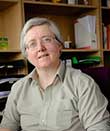 |
Prof Susan Stepney | Non-standard computation: bio-inspired algorithms, complex adaptive systems, emergent properties, nanite assemblers. |
Professor Computer Science |
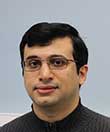 |
Dr Danesh Tarapore |
Experience in design of fault-tolerant collective robotics systems, with research work in areas of evolutionary robotics, computational immunology, social biology, and use of robots as physical models in experimental biology. |
Marie Curie Research Associate
|
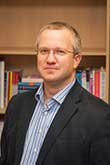 |
Prof Jon Timmis |
Development of computational models of immune function (computational immunology), and fault-tolerance achieved via bio-inspired engineering with a focus on the immune system (immuno-engineering). Swarm robotic systems as a platform for testing our ideas realting to fault tolerence and anomaly detection. Modelling and simulation of complex systems. |
Robotics Laboratory Director Professor of Intelligent and Adaptive Systems Electronic Engineering |
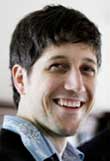 |
Dr Martin Trefzer |
Using bio-inspired techniques to create scalable, fault-tolerant, adaptive and autonomous digital systems; dynamic and multi-reconfigurable architectures to tackle nano-scaled design. |
Lecturer Electronic Engineering |
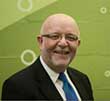 |
Prof Andy Tyrrell | Artificial Immune Systems, Bio-Inspired Computing, Evolutionary Algorithms, Evolutionary Computing, Fault-Tolerant Design, Microprocessor Design, Reconfigurable Systems |
Head of Intelligent Systems Group Electronic Engineering |
 |
Prof Alan Winfield | Mobile robotics: intelligent control, stable adaptive neural control and behaviour based control. Swarm robotics: algorithms, analysis, modelling and specification for potential high integrity applications. |
Visiting Professor Electronic Engineering (Bristol Robotics Lab) |
Previous Staff
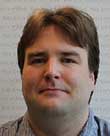 |
Dr Ed Clark | 2014 - Teaching fellow for the MSc Autonomous Robotics Engineering Course.
Collective robotics, emergent behaviour, artificial chemistries. |
Teaching Fellow Electronic Engineering |
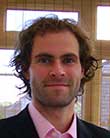 |
Dr Mark Read | 2013 - Research associate on the CoCoRo Project. Now a Research Fellow and the Charles Perkins Centre, University of Sydney. |
Research Associate Electronic Engineering |
 |
Dr Alex Turner | 2013 - Researched software systems on the CoCoRo Project (underwater swarm robotics.) Now lecturing at Hull University. |
Research Associate Electronic Engineering |
Research Students
Current Students
Post-Graduate Researchers
| Name | Area of Research | Department |
|---|---|---|
| Sophie Alexander |
Safe and Reliable Swarm Robotic Systems |
Computer Science |
| Edgar Buchanan | Fault Tolerant Heterogeneous Swarms |
Electronic Engineering |
| Naomi Gildert | Electronic Engineering | |
| James O'Keefe |
Evolvable Immune Systems for Swarm Robotics |
Electronic Engineering |
| Oyinlola Oladiran |
Evolvable Immune Systems for Swarm Robotics |
Electronic Engineering |
| Matthew Prinold |
Multi-Robots for Tracking Objects of Interest |
Computer Science |
| Richard Redpath |
Autonomous Swarm Exploration of Unknown Terrains |
Electronic Engineering |
| Hao Sun |
Simultaneous Localisation and Mapping using Consumer Grade 3D Cameras |
Computer Science |
| Hao Wei |
Safe and Reliable Swarm Robotic Systems |
Computer Science |
| Guangsha Xu |
Collective Task Allocation in Swarm Robotics |
Electronic Engineering |
| Yuyuan Zhang |
Metamorphic Architectures for Flying Robots |
Electronic Engineering |
MSc Intelligent Robotics
| Name |
Under-Graduate
| Name | Area of Research | Department |
|---|---|---|
| Alex Butcher | Augmented reality debugging systems for robot swarms | Electronic Engineering |
| Antonio Figueirido | Voice-control of robot swarms using IBM Watson | Electronic Engineering |
| Nathaneal Young | Android application for PsiSwarm robot in education | Electronic Engineering |
Alumni
PhD Students
| Dr Ran Bi | Computer Science |
| Dr Rita Ismail | Computer Science |
| Dr Anna Ladi | Electronics |
| Dr Hui Keng Lau | Computer Science |
| Dr Tiong Hoo Lim | Computer Science |
| Dr Yang Liu | Electronics |
| Dr Lachlan Murray | Electronics |
| Dr Jenny Owen | Computer Science |
| Dr Nick Owens | Electronics |
| Dr Omer Qadir | Electronics |
| Dr James Stovold | Computer Science |
MSc Students
| Edgar Buchanen Berumen | 2014 |
| Huseyin Erdem | 2014 |
| Homero Silva Elizondo | 2015 |
| Robert Evans | 2015 |
| Cristian Valentin Fleseriu | 2017 |
|
Yujia Gao ("Jessica") |
2017 |
| Matthew Hosier | 2017 |
|
Samuel Jakobsen |
2017 |
| Chengqing Liu | 2015 |
| Mohammadshahid Memon | 2014 |
| Krishnan Nambiar | 2014 |
|
Leonard Newbrook |
2017 |
| Mayank Paymar | 2014 |
|
Alix Partridge |
2017 |
| Jose Maria Rivas | 2017 |
| Muhammad Rizzuwan Bin Abdul Wahid | 2014 |
| Zihui Wang | 2017 |
| Shengsong Yang | 2015 |
| Dingdian Zhang | 2017 |
Undergraduate Students
| Alexander Horsfield | Electronics | Design of an Android-based teaching app. for PsiSwarm Robots |
| Georgi Hristov | Electronics | Pattern formation in E-Puck Robots |
| Patrick Hutton | Computer Science | Search, localisation and recruitment with drone Robots |
| Ali Jewers | Electronics | Augmented reality debugging systems for robot swarms |
| Artjoms Rizihs | Computer Science | Swarming algorithms with Pi Swarm Robots |
